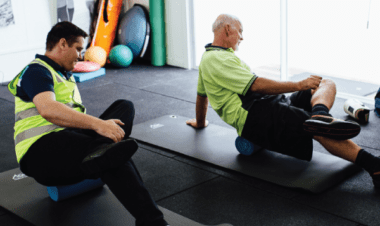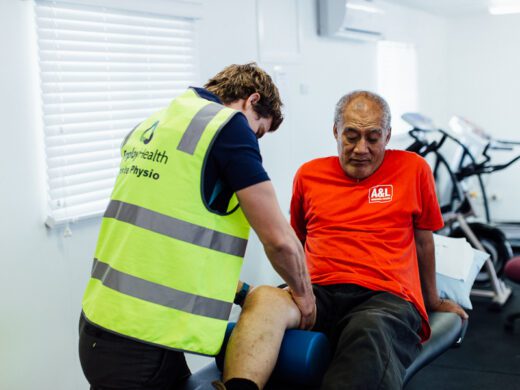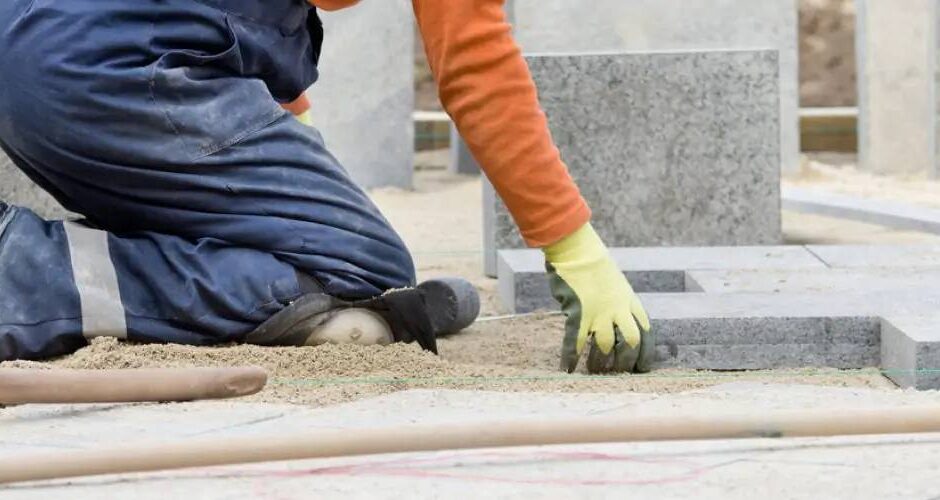Causes of Knee Osteoarthritis
Traditionally, knee OA was wholly considered a degenerative disease of the knee cartilage (smooth rubber-like padding that covers and protects bones at joint sites). As the cartilage has low vascularisation and nerve innervation, it’s unlikely to solely cause pain in knee OA. New evidence has shown that it’s a multifactorial issue, with causative factors such as trauma, mechanical forces, inflammation, biochemical reactions and metabolic derangements.



What Factors Influence Knee Osteoarthritis
Generally, most people will eventually develop some degree of knee OA throughout their life, with some of these being symptomatic. Here are some of the factors that can increase the risk of developing or compounding knee OA:
- Age – Most common factor, as we heal less effectively as we age.
- Medically overweight – Having a body mass index (BMI) greater than 25 places an increased amount of pressure through the knee joint.
- Gender – Women who are aged greater than 55 years old.
- Hereditary – Some evidence of hereditary components, such as inheriting abnormalities in the shape of the bones around the knee joint.
- Repetitive stress injuries – For example: kneeling, squatting, or lifting greater than 55 pounds, typically, when it’s beyond your capacity.
Symptoms of Knee Osteoarthritis
Each person’s experience of knee OA is unique, with some people experiencing more symptoms than others, regardless of the level of degeneration found on imaging. The below symptoms are the most frequently experienced by people who have knee OA.
- Pain – A dull pain generally occurs when initiating a movement, such as walking, after being sedentary. As knee OA progresses, this can then develop into pain throughout a movement, and then become more constant pain that also exists at night.
- Loss of function – Knee stiffness with reduced range of motion, impairment with daily activities like walking up/down stairs, and the need for orthopaedic aids, such as a cane.
- Other – Some people may experience a grinding sound at their knee and some also report increased knee sensitivity to cold.
What can help?
As this condition can affect so many people, it’s very likely each workplace will be affected in some capacity. Currently, the strongest evidence to best treat knee OA is to engage in a tailored exercise program that targets the correct muscles and structures. When used in combination with SMART (Specific Measurable Achievable Relevant Time-Bound) goals, the likelihood of reduced pain improves significantly.
Beyond this, prevention is by far the best approach. By utilising a partner, such as Employ Health and its Health Hub, you can screen workers against the aforementioned factors, plus against further physiotherapy tests to determine who may be at risk. Once established, you can increase the worker’s capacity and lower their knee OA risk, plus safeguard your workplace too.
References:
- The Royal Australian College of General Practitioners. Guideline for the management of knee and hip osteoarthritis. 2nd edn. East Melbourne, Vic: RACGP, 2018.
- Mora JC, Przkora R, Cruz-Almeida Y. Knee osteoarthritis: pathophysiology and current treatment modalities. J Pain Res. 2018;11:2189–2196. Published 2018 Oct 5.
- Mcalindon TE, Bannuru RR, Sullivan MC, et al. OARSI guidelines for the non-surgical management of knee osteoarthritis. Osteoarthritis Cartilage. 2014;22(3):363–388.
- Hochberg MC, Altman RD, April KT, et al. American College of Rheumatology 2012 recommendations for the use of nonpharmacologic and pharmacologic therapies in osteoarthritis of the hand, hip, and knee. Arthritis Care Res. 2012;64(4):465–474.
- Jevsevar DS. Treatment of osteoarthritis of the knee: evidence-based guideline, 2nd edition. J Am Acad Orthop Surg. 2013;21(9):571–576.
